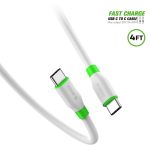It is very important to understand the difference between the dynamics of the cash flow of MCAs and small business loans. In case of a small business loan, the thing that needs to be taken into account is a principal amount that needs to be paid back with interest as per a monthly schedule.
On the other hand in case of an MCA, it does not have any such term or condition. In terms of an MCA, it is a certain percentage of share or future revenues (the Purchased Amount) of the merchant that he decides to sell off to a funder in exchange for a certain amount of cash (the Funded Amount) at a go.
MCAs have an amount of dollar pre-negotiated which id disbursed daily via ACH. However in case the amount of revenue in a particular month is not up to the mark, the merchants can reconcile the amount and the MCAs can adjust the percentage of debits on the basis of the sales on a contractual basis.
The analysis of discounted cash flow is of immense importance. There are certain issues with the cash flow dynamics of MCAs and that hence it needs to be modeled individually for each MCA. Historical data and methods should be considered while making assumptions about projections and understanding future sales.
All kinds of cashflows including commissions, ongoing fees and charge offs should be considered. As there might be scenarios where the cashflows of merchants might vary as per the projections, hence while underwriting the MCA, alternative scenarios also should be taken into account. Businesses of a particular sector might have a historical behavior of cashflow it can also be studied while deciding on the MCA and for analysis.
Analysis and understanding of the payment behavior include the representation of the cash flows in payment curves. This can be expressed by the percentage of the purchased amount against the cash flow that was projected to be received at the time of underwriting. The curve is known as the ‘Cash Flow Curve’ and the steepness of the curve defines the ‘Cash Flow Speed’. In other words, The Cash Flow Speed is the cash flow received divided by that was supposed to be received at the time of underwriting.
A perfect underwriting of MCA would be one which has no reconciliations and the daily ACH has no glitches, that is, the purchased amount was received as it was projected at the time of underwriting and the cash flow speed would be 100.0% each day. However, this does not work as well in practice as it works theoretically.
There are instances of failed ACHs, additional payments to cover-up the failed payments, renegotiation of ACH after a failed payment and so on. It is important to analyze the Cash flow curve of each MCA and comparing it to its cohort to understand the process and determining the future cash flows.
The example below illustrates an MCA agreement, a merchant sells $70,000 of future sales (the Purchased Amount) to the funder for $50,000 (the Funded Amount). The Purchased Amount is to be received via ACH daily, with $500 debited per day for the next 140 business days based on revenues projected.
In this example, the Gross Factor is 1.40, i.e. $70,000 divided by $50,000. Assuming that the funder pays a commission of 8% of the Funded Amount, the Funder’s Cost is $54,000, and the Net Factor is 1.30, i.e. $70,000 divided by $54,000. The graph below illustrates some possibilities of what the actual Cash Flow Curves might be.
Received as projected: shows that the debits are received through ACH, every day until the purchased amount is paid back. The Cash Flow speed is 100%.
Pays off Early: this shows that the merchant decides to pay off some additional amount to the funder. This happens after negotiation with the MCA and paying them off after 49 business days. In this case, the cashflow speed at the time of the end of tenure is 121%
Default: When the projected sales do not match up and the ACH debits fail frequently. In this case, the funder can take the merchant for litigation for the ‘Defaulted Amount’. The cashflow is 71.4% in this scenario.
Slower than projected: This depicts the scenario where the ACH fails but the merchant does not shut down the payment completely. The funder is paid the cashflow slowly than the projected rate. For example, if we assume that the merchant had not been paying in according to the contract but has agreed to make a “catch-up” payment. After 140 days only $59,000, or 84.3% of the $70,000 Purchased Amount, has been received, although the funder would likely still expect to receive the rest of the Purchased amount. In this case, the Cash Flow Speed on the measurement day would be 85.7%.
Used for Modeling: While modeling or analyzing an MCA beforehand for the behavior of cashflow each of the possibilities in the scenario needs to be taken into account. For example, after 140 days, if 85.7% of the purchased amount has been disbursed it can be assumed that within 210 days the total purchased amount will be received (150% of the negotiated projection) and 90.3% of the purchased amount received by then, then the cash flow speed would be measured as 104.6%. As per the funder’s cost, the below chart defines the return metrics based on the cash flow curves of different kinds explained above.
As an industry grows, spreads it wings and becomes mature it draws more capital towards itself from different sets of investors, sponsors, and funders. Hence it becomes increasingly important to define the metrics of the same and to evaluate the effectiveness and understand the credit performance of cohorts and originators of MCAs and show its valuations. Standardizing the terms such as Purchased Amount, Funded Amount, and Net Factor, Gross Factor and the ideas of the various cashflow curves, cash flow speed and its kinds will be able to make the understanding of the MCAs easy and get rid of ambiguities among the industries and the people.














